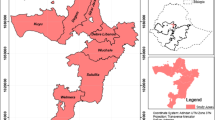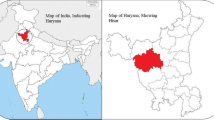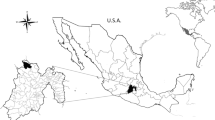Abstract
Livestock productions require significant resources allocation in the form of land, water, energy, air, and capital. Meanwhile, owing to increase in the global demand for livestock products, it is wise to consider sustainable livestock practices. In the past few decades, footprints have emerged as indicators for sustainability assessment. In this study, we are introducing a new footprint measure to assess sustainability of a grazing dairy farm while considering carbon, water, energy, and economic impacts of milk production. To achieve this goal, a representative farm was developed based on grazing dairy practices surveys in the State of Michigan, USA. This information was incorporated into the Integrated Farm System Model (IFSM) to estimate the farm carbon, water, energy, and economic impacts and associated footprints for ten different regions in Michigan. A multi-criterion decision-making method called VIKOR was used to determine the overall impacts of the representative farms. This new measure is called the food footprint. Using this new indicator, the most sustainable milk production level (8618 kg/cow/year) was identified that is 19.4% higher than the average milk production (7215 kg/cow/year) in the area of interest. In addition, the most sustainable pasture composition was identified as 90% tall fescue with 10% white clover. The methodology introduced here can be adopted in other regions to improve sustainability by reducing water, energy, and environmental impacts of grazing dairy farms, while maximizing the farm profit and productions.










Similar content being viewed by others
References
Adom F, Maes A, Workman C, Clayton-Nierderman Z, Thoma G, Shonnard D (2012) Regional carbon footprint analysis of dairy feeds for milk production in the USA. Int J Life Cycle Assess 17:520–534
Barnes R, Nelson C, Moore K, Collins M (2007) Forages: an introduction to grassland agriculture, 6th edn. Iowa State University Press, Ames, Iowa
Bryant JR, Snow VO (2008) Modelling pastoral farm agro-ecosystems: a review. New Zeal J Agric Res 51:349–363
BSI (British Standard Institute) (2008) Guide to PAS2050. How to assess the carbon footprint of goods and services. British Standards, London, UK
Cassida K, Paling J, Kapp C (2014) 2014 Michigan forage variety test report. Forage factsheet #15–01. Michigan State University Extension, East Lansing, MI
Cecchini L, Torquati B, Paffarini C, Barbanera M, Foschini D, Chiorri M (2016) The milk supply chain in Italy’s Umbria region: environmental and economic sustainability. Sustainability 8:728
Celebi ME, Kingravi HA, Vela PA (2013) A comparative study of efficient initialization methods for the k-means clustering algorithm. Expert Syst Appl 40:200–210
Clayton-Matthews A, Watanabe P (2012) Massachusetts immigrants by the numbers: Demographic Characteristics and Economic Footprint, 2nd edn. Immigrant Learning Center, Inc.: Malden, MA
Corson MS, Rotz AC, Skinner HR, Sanderson MA (2007) Adaptation and evaluation of the Integrated Farm System Model to simulate temperate multiple-species pastures. Agric Syst 94:502–508
Čuček L, Klemeš JJ, Kravanja Z (2012) A review of footprint analysis tools for monitoring impacts on sustainability. J Clean Prod 34:9–20
de Léis CM, Cherubini E, Ruviaro CF, Prudêncio da Silva V, do Nascimento Lampert V, Spies A, Soares SR (2015) Carbon footprint of milk production in Brazil: a comparative case study. Int J Life Cycle Assess 20:46–60
Del Prado A, Misselbrook T, Chadwick D, Hopkins A, Dewhurst RJ, Davison P, Butler A, Schröder J, Scholefield D (2011) SIMSDAIRY: a modelling framework to identify sustainable dairy farms in the UK. Framework description and test for organic systems and N fertiliser optimisation. Sci Total Environ 409(19):3993–4009
Dyer JA, Vergé XPC, Desjardins RL, McConkey BG (2014) Assessment of the carbon and non-carbon footprint interactions of livestock production in Eastern and Western Canada. Agroecol Sustain Food Syst 38:541–572
EC (European Commission) (2007) Carbon footprint: what it is and how to measure it. http://www.to-be.it/wp-content/uploads/2015/07/Carbon-footprint.pdf. Accessed 21 Feb 2018
EPA (United States Environmental Protection Agency) (2015) Ag 101: dairy production https://www.epa.gov/sites/production/files/2015-07/documents/ag_101_agriculture_us_epa_0.pdf. Accessed 21 Feb 2018
FAO (Food and Agriculture Organization of the United Nations) (2010) Greenhouse gas emissions from the dairy sector: a life cycle assessment. Animal Production and Health Division, Rome
FAO (Food and Agriculture Organization of the United Nations) (2016) FAOstat. Statistical databases-Livestock Primary, Rome
Finkbeiner M (2009) Carbon footprinting: opportunities and threats. Int J Life Cycle Assess 14:91–94
Flanders FB, Gillespie JR (2015) Modern livestock & poultry production, 9th edn. Cengage Learning, Boston, MA
Flysjö A, Henriksson M, Cederberg C, Ledgard S, Englund JE (2011) The impact of various parameters on the carbon footprint of milk production in New Zealand and Sweden. Agric Syst 104:459–469
Galli A, Wiedmann T, Ercin E, Knoblauch D, Ewing B, Giljum S (2011) Integrating ecological, carbon and water footprint: defining the “footprint family” and its application in tracking human pressure on the planet. Technical Document, Surrey, UK
Galli A, Wiedmann T, Ercin E, Knoblauch D, Ewing B, Giljum S (2012) Integrating ecological, carbon and water footprint into a “Footprint Family” of indicators: definition and role in tracking human pressure on the planet. Ecol Indic 16:100–112
Garnett T (2009) Livestock-related greenhouse gas emissions: impacts and options for policy makers. Environ Sci Policy 12:491–503
Hatfield J, Takle G, Grotjahn R, Holden P, Izaurralde RC, Mader T, Marshall E, Liverman D (2014) Ch. 6: Agriculture. Climate change impacts in the United States: The Third National Climate Assessment. In: JM Melillo, Terese (TC) Richmond, GW Yohe (eds) U.S. Global Change Research Program, Washington, DC, p 150–174
Heckman E, Hinds S, Johnson K, Perkins J, Shelton V, Zupancic R (2007) Management-intensive grazing in Indiana. Bulletin AY-328. USDA-NRCS Extension, Indiana
Hermann BG, Debeer L, De Wilde B, Blok K, Patel MK (2011) To compost or not to compost: Carbon and energy footprints of biodegradable materials’ waste treatment. Polym Degrad Stab 96:1159–1171
Hoekstra AY (2008) Water neutral: reducing and offsetting the impacts of water footprints. UNESCO-IHE, Delft, The Netherlands. Value of Water Research Report Series No. 28
Huang J, Xu CC, Ridoutt BG, Liu JJ, Zhang HL, Chen F, Li Y (2014) Water availability footprint of milk and milk products from large-scale dairy production systems in Northeast China. J Clean Prod 79:91–97
IPCC (Intergovermental Panel on Climate Change) (2001) Climate change 2001: the scientific basis. In: Houghton JT, Ding Y, Griggs DJ, Noguer M, van der Linden PJ, Dai X, Maskell K, Johnson CA (eds) Contribution of Working Group I to the Third Assessment Report of the Intergovernmental Panel on Climate Change. Cambridge University Press, Cambridge, UK and New York, NY, USA
IPCC (Intergovermental Panel on Climate Change) (2014) Climate change 2014: impacts, adaptation, and vulnerability. Part A: Global and sectoral aspects. In: Field CB, Barros VR, Dokken DJ, Mach KJ, Mastrandrea MD, Bilir TE, Chatterjee M, Ebi KL, Estrada YO, Genova RC, Girma B, Kissel ES, Levy AN, MacCracken S, Mastrandrea PR, White LL (eds) Contribution of Working Group II to the Fifth Assessment Report of the Intergovernmental Panel on Climate Change. Cambridge University Press, Cambridge, UK and New York, NY, USA, pp 1132
Jain AK (2010) Data clustering: 50 years beyond K-means, Pattern Recognition Letters
Mc Geough EJ, Little SM, Janzen HH, McAllister TA, McGinn SM, Beauchemin KA (2012) Life-cycle assessment of greenhouse gas emissions from dairy production in Eastern Canada: a case study. J Dairy Sci 95:5164–5175
Muller LD (2004) Managing to get more milk and profit from pasture. PennState Extension, Pennsylvania State University, Pennsylvania
Musumba M, Grabowski P, Palm C, Snapp S (2017) Guide for the sustainable intensification assessment framework. The U.S. Government’s Global Hunger & Food Security Initiative
Murphy E, De Boer IJM, Van Middelaar CE, Holden NM, Shalloo L, Curran TP, Upton J (2017) Water footprinting of dairy farming in Ireland. J Clean Prod 140:547–555
O’Brien D, Capper JL, Garnsworthy PC, Grainger C, Shalloo L (2014) A case study of the carbon footprint of milk from high-performing confinement and grass-based dairy farms. J Dairy Sci 97:1835–1851
OECD (Organisation for Economic Co-operation and Development) (2004) Measuring sustainable development: integrated economic. Environmental and Social Frameworks, Paris, France
Ogle D, St. John L (2008) Plant guide for white clover (Trifolium repens L.). USDA-Natural Resources Conservation Service, Idaho Plant Materials Center, Aberdeen, Idaho
Olsson JA, Bockstaller C, Stapleton LM, Ewert F, Knapen R, Therond O, Geniaux G, Bellon S, Correira TP, Turpin N, Bezlepkina I (2009) A goal oriented indicator framework to support integrated assessment of new policies for agri-environmental systems. Environ Sci Policy 12(5):562–572
Opricovic S (2011) Fuzzy VIKOR with an application to water resources planning. Expert Syst Appl 38:12983–12990
Opricovic S (2009) A compromise solution in water resources planning. Water Resour Manag 23:1549–1561
Opricovic S, Tzeng GH (2007) Extended VIKOR method in comparison with outranking methods. Eur J Oper Res 178:514–529
Opricovic S, Tzeng GH (2004) Compromise solution by MCDM methods: a comparative analysis of VIKOR and TOPSIS. Eur J Oper Res 156:445–455
Owusu-Sekyere E, Scheepers M, Jordaan H (2016) Water footprint of milk produced and processed in South Africa: implications for policy-makers and stakeholders along the dairy value chain. Water 8:322
Pagani M, Vittuari M, Johnson TG, De Menna F (2016) An assessment of the energy footprint of dairy farms in Missouri and Emilia-Romagna. Agric Syst 145:116–126
Palhares JCP, Pezzopane JRM (2015) Water footprint accounting and scarcity indicators of conventional and organic dairy production systems. J Clean Prod 93:299–307
Rojas-Downing MM, Harrigan T, Nejadhashemi AP (2017a) Resource use and economic impacts in the transition from small confinement to pasture-based dairies. Agric Syst 153:157–171
Rojas-Downing MM, Nejadhashemi AP, Abouali M, Daneshvar F, Al Masraf SAD, Herman MR, Harrigan T, Zhang Z (2017b) Pasture diversification to combat climate change impacts on grazing dairy production. Mitig Adapt Strateg Glob Chang 23:405–431
Rojas-Downing MM, Nejadhashemi AP, Harrigan T, Woznicki SA (2017c) Climate change and livestock: Impacts, adaptation, and mitigation. Clim Risk Manage 16:145–163
Rotz CA (2004) The Integrated Farm System Model: a tool for developing more economically and environmentally sustainable farming systems for the Northeast. NABEC. 2004 Northeast Agricultural and Biological Engineering Conference Sponsored by ASAE. ASABE, St. Joseph, MI, p 4–22
Rotz CA, Corson MS, Chianese DS, Montes F, Hafner SD, Bonifacio HF, Coiner CU (2014). The Integrated Farm System Model – reference manual, version 4.2. Pasture Systems and Watershed Management Research Unit, Agricultural Research Service, United States Department of Agriculture, University Park, PA, USA
Sayadi MK, Heydari M, Shahanaghi K (2009) Extension of VIKOR method for decision making problem with interval numbers. Appl Math Model 33:2257–2262
Schils RLM, Olesen JE, del Prado A, Soussana JF (2007) A review of farm level modelling approaches for mitigating greenhouse gas emissions from ruminant livestock systems. Livest Sci 112:240–251
Sharpley AN, Williams JR (1990) EPIC-erosion/productivity impact calculator: 1. Model documentation, USDA-ARS Technical Bulletin 1768
Sobhani R, Abahusayn M, Gabelich CJ, Rosso D (2012) Energy footprint analysis of brackish groundwater desalination with zero liquid discharge in inland areas of the Arabian Peninsula. Desalination 291:106–116
Sullivan K, DeClue R, Emmick D (2000) Prescribed grazing and feeding management for lactating dairy cows. USDA-NRCS, Syracuse
Thornton PK (2010) Livestock production: recent trends, future prospects. Philos Trans R Soc B 365:2853–2867
United Dairy Industry of Michigan (2016) dairy facts. https://www.milkmeansmore.org/milk-local/michigan-dairy-facts/. Accessed 21 Feb 2018
USDA (United States Department of Agriculture) (2014) Milk cows and production: Final estimates 2008-2012. http://usda.mannlib.cornell.edu/usda/nass/milkcowest//2010s/2014/milkcowest_MilkCowsandProduction-FinalEstimates,2008-12.pdf
USDA-ARS (United States Department of Agriculture- Agricultural Research Service) (2016) Integrated Farm System Model. https://www.ars.usda.gov/northeast-area/up-pa/pswmru/docs/integrated-farm-system-model/. Accessed 21 Feb 2018
USDA-NASS (United States Department of Agriculture-National Agricultural Statistics Service) (2014) 2012 Census of agriculture. Michigan, State and County Data. AC-12-A-22, Washington, D.C
USDA-NRCS (United States Department of Agriculture-Natural Resources Conservation Service) (2002) Plant Fact Sheet for Red Clover (Trifolium pratense L.). Washington, DC
USGS (United States Geological Survey) (2017) Hydrologic unit maps. https://water.usgs.gov/GIS/huc.html
Van Calker KJ, Berentsen PBM, Romero C, Giesen GWJ, Huirne RBM (2006) Development and application of a multi-attribute sustainability function for Dutch dairy farming systems. Ecol Econom 57(4):640–658
Vasilaki V, Katsou E, Ponsá S, Colón J (2016) Water and carbon footprint of selected dairy products: a case study in Catalonia. J Clean Prod 139:504–516
Viessman Jr W, Lewis GL (2003) Introduction to hydrology, 5th edn. Pearson Education Inc, Upper Saddle River, NJ
Wachendorf M, Golinski P (2006) Towards sustainable intensive dairy farming in Europe. Grassl Sci Eur 11:159–174
Wallis TWR, Griffiths JF (1995) An assessment of the weather generator (WXGEN) used in the erosion/productivity impact calculator (EPIC). Agric Meteorol 73:115–133
WCED (World Commission on Environment and Sustainable Development) (1987) Our Common Future (The Brundtland Report). Oxford University Press, Oxford, Bungay, Suffolk, UK
Wittenberg E, Wolf C (2008) 2007 Michigan Dairy Grazing Farm Business Analysis Summary. Michigan State University, Staff Paper No. 2008-5.
Woznicki SA, Nejadhashemi AP, Ross DM, Zhang Z, Wang L, Esfahanian AH (2015) Ecohydrological model parameter selection for stream health evaluation. Sci Total Environ 511:341–353
Yu PL (1973) A class of solutions for group decision problems. Manag Sci 19:936–946
Zanakis SH, Solomon A, Wishart N, Dublish S (1998) Multi-attribute decision making: a simulation comparison of select methods. Eur J Oper Res 107:507–529
Zehetmeier M, Gandorfer M, Hoffmann H, Muller UK, De Boer IJM, Heibenhuber A (2014) The impact of uncertainties on predicted greenhouse gas emissions of dairy cow production systems. J Clean Prod 73:116–124
Zonderland-Thomassen MA, Ledgard SF (2012) Water footprinting: a comparison of methods using New Zealand dairy farming as a case study. Agric Syst 110:30–40
Acknowledgements
This work is supported by the US Department of Agriculture – National Institute of Food and Agriculture, Hatch project MICL02359 and the Environmental Science and Policy Program at Michigan State University.
Author information
Authors and Affiliations
Corresponding author
Ethics declarations
Conflict of Interest
The authors declare that they have no conflict of interest.
Electronic supplementary material
Rights and permissions
About this article
Cite this article
Rojas-Downing, M.M., Nejadhashemi, A.P., Elahi, B. et al. Food Footprint as a Measure of Sustainability for Grazing Dairy Farms. Environmental Management 62, 1073–1088 (2018). https://doi.org/10.1007/s00267-018-1101-y
Received:
Accepted:
Published:
Issue Date:
DOI: https://doi.org/10.1007/s00267-018-1101-y




